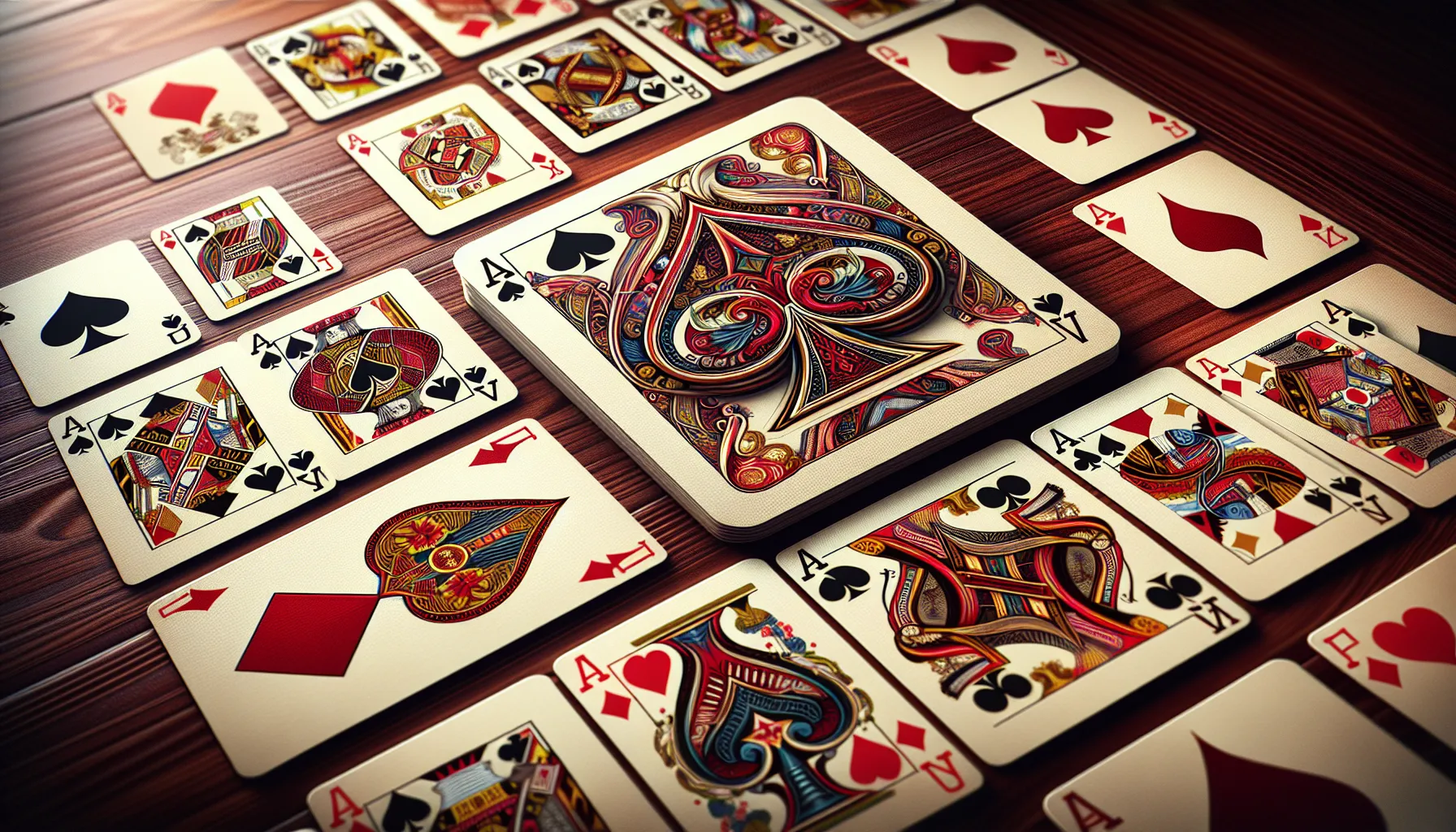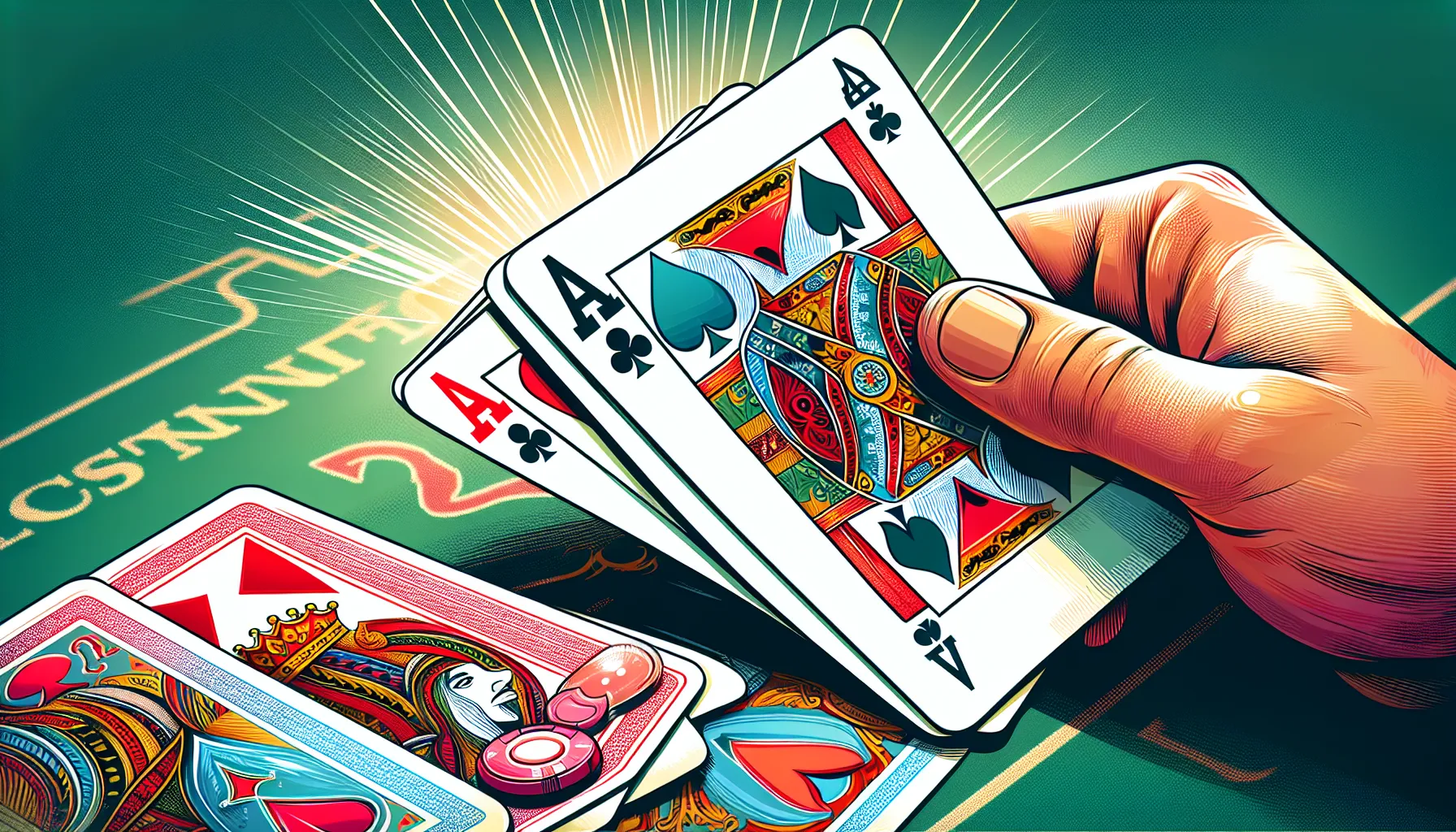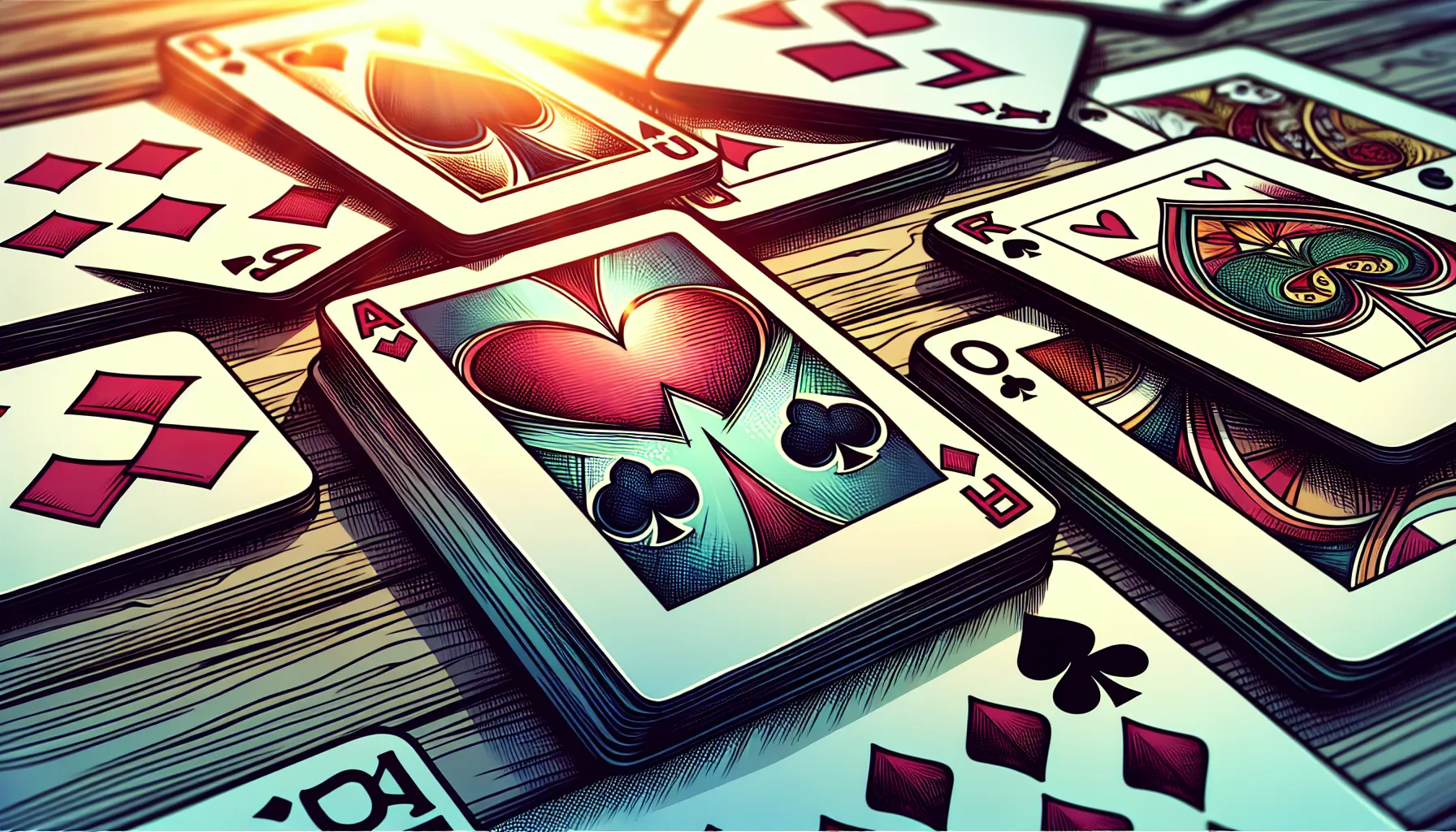Playing cards aren’t just for fun—they’re a perfect way to explore the fascinating world of probability. Whether you’re a poker enthusiast or just curious about the odds, understanding how to calculate probabilities in a deck of cards can sharpen your strategy and decision-making skills. With 52 cards divided into four suits and ranks, every draw holds a unique mathematical possibility.
You don’t need to be a math whiz to grasp the basics. By breaking down the deck and applying simple probability principles, you can predict outcomes like the chances of drawing an ace or landing a specific hand in your favorite card game. It’s all about knowing the numbers and how they interact. Ready to up your game? Let’s dive into the essentials of calculating probabilities with playing cards.
Understanding Probability In Playing Cards
Probability in playing cards focuses on predicting possible outcomes based on a structured set of rules. With 52 cards in a standard deck, you can calculate probabilities by analyzing the deck’s composition and applying simple formulas.
What Is Probability?
Probability measures the likelihood of an event occurring, expressed as a fraction, percentage, or ratio. The formula for probability is:
P(Event) = Number of favorable outcomes ÷ Total number of possible outcomes
In playing cards, events could include drawing a specific suit, number, or combination. For example, the probability of drawing an Ace from a standard 52-card deck is 4 ÷ 52, or approximately 7.69%.
Overview Of A Standard Deck Of Playing Cards
A standard deck of playing cards contains 52 cards divided into four suits: hearts, diamonds, clubs, and spades. Each suit consists of 13 cards: Ace through 10, and three face cards (Jack, Queen, King).
- Total suits: 4 (hearts, diamonds, clubs, spades)
- Cards per suit: 13
- Face cards per suit: 3
- Red cards (hearts, diamonds): 26
- Black cards (clubs, spades): 26
This structure, with equal distribution across suits and ranks, allows you to calculate probabilities consistently across different events. For example, the likelihood of drawing a red card is 26 ÷ 52, or 50%.
Key Probability Concepts For Playing Cards

Understanding key concepts helps you calculate probabilities accurately in card games. These principles clarify how different events in a deck of 52 cards influence outcomes.
Independent And Dependent Events
Independent events don’t impact the probability of each other. For example, drawing a card, replacing it, and drawing again are independent since the deck resets. The probability of drawing an Ace each time remains 4/52 (about 7.69%).
Dependent events affect subsequent outcomes. If you draw a card and don’t replace it, the composition of the deck changes. For instance, if you draw an Ace, the chance of pulling another Ace drops to 3/51 (about 5.88%).
Recognizing event dependency ensures proper calculation in scenarios like consecutive draws or selective removal.
Basic Probability Formula
The basic formula for probability is straightforward:
P(Event) = (Favorable Outcomes) / (Total Outcomes).
For instance, calculating the probability of drawing a King involves dividing the 4 Kings by the total 52 cards: P(King) = 4/52 or approximately 7.69%. Similarly, calculating a two-card event requires considering either independently or dependently drawn cards, based on context.
Types Of Probabilities In Playing Cards

Calculating probabilities in playing cards involves understanding different types of events and scenarios. These include single draws and multiple draws, which can be either independent or dependent actions.
Single Draw Probabilities
Single draw probabilities refer to the likelihood of drawing a specific card in one action. For example, if you’re looking for an Ace, the number of favorable outcomes is 4 (one Ace per suit), while total outcomes remain 52. Using the formula:
P(Event) = Favorable Outcomes / Total Outcomes,
P(Ace) = 4 / 52 ≈ 0.0769 or 7.69%.
This type of probability applies when only one card is drawn and no further action influences the result.
Multiple Draw Probabilities (With And Without Replacement)
Multiple draw probabilities involve calculating outcomes over a series of draws. These depend on whether replacement occurs after a card is drawn.
With Replacement: For independent events, the first card is replaced before the second is drawn. The total outcomes stay constant. For instance, drawing two Kings consecutively:
P(King on First) = 4 / 52,
P(King on Second) = 4 / 52.
Thus, P(Both Kings) = (4 / 52) × (4 / 52) ≈ 0.0059 or 0.59%.
Without Replacement: For dependent events, cards are not replaced, so total outcomes decrease by one after each draw. Using the same scenario:
P(King on First) = 4 / 52,
P(King on Second) = 3 / 51.
Thus, P(Both Kings) = (4 / 52) × (3 / 51) ≈ 0.0045 or 0.45%.
Recognizing these distinctions helps accurately predict outcomes over multiple actions.
Step-By-Step Guide: How To Calculate Probability Of Playing Cards

Learning to calculate probabilities in card games provides insights into potential outcomes. Use these steps to apply mathematical principles for accurate predictions.
Calculating Probability Of A Single Suit
A standard deck has 52 cards divided into four suits: Hearts, Diamonds, Clubs, and Spades. Each suit consists of 13 cards. The probability of drawing one card from a specific suit is calculated by dividing the number of favorable outcomes (cards in the suit) by the total outcomes (all cards in the deck).
Formula:
P(Single Suit) = Favorable Outcomes / Total Outcomes
Example:
P(Hearts) = 13 / 52 = 1 / 4 = 25%
Finding The Probability Of Specific Cards
To find the probability of drawing specific cards like an Ace or King, consider how many such cards exist in the deck. There are four Aces or Kings (one in each suit) in a standard deck of 52 cards. Use the basic probability formula for calculations.
Formula:
P(Specific Card) = Favorable Outcomes / Total Outcomes
Example:
P(Ace) = 4 / 52 ≈ 7.69%
P(King) = 4 / 52 ≈ 7.69%
Calculating Probabilities For Combinations
Combination probabilities involve drawing cards based on specific criteria. Examples include drawing a red King or a pair of Jacks. For calculation, consider the overlap of events and their dependencies. Use the multiplication rule for independent events or adjust totals for dependent events.
Example 1: Probability of a red King:
There are two red Kings (Hearts and Diamonds) in a deck of 52 cards.
P(Red King) = 2 / 52 ≈ 3.85%
Example 2: Probability of drawing two Jacks consecutively without replacement:
There are four Jacks in the deck, with probabilities changing after each draw.
P(First Jack) = 4 / 52
P(Second Jack) = 3 / 51
Common Mistakes To Avoid
Avoiding common mistakes is essential when calculating card probabilities. Errors often arise from misunderstandings about replacement rules and incorrect outcome counts.
Misunderstanding Replacement Rules
Understand the distinction between with and without replacement scenarios. In with-replacement cases, you return the card to the deck after drawing. This keeps the total number of cards unchanged and makes each draw an independent event. For example, the probability of drawing an Ace remains 4/52 (7.69%) in consecutive draws when using replacement.
In without-replacement cases, the drawn card is not returned, reducing the total cards in the deck. This introduces dependence; the chance of specific outcomes changes with each draw. For instance, if an Ace is drawn first, the probability of drawing another Ace on the second draw becomes 3/51 (5.88%). Misapplying these rules leads to incorrect probability values.
Incorrectly Counting Outcomes
Accurate probability calculations rely on correctly identifying favorable and total outcomes. Ensure you’re counting unique favorable outcomes without duplication. If calculating the probability of drawing a red Queen, there are two favorable outcomes: one Queen of Hearts and one Queen of Diamonds, not four. Miscounting favorable outcomes can inflate results.
Similarly, double-check total outcomes. For a standard deck, the total is always 52 initially. Omissions or adding irrelevant situations, like including Jokers in a standard deck, skew the calculations. Verifying counts aligns probabilities with the actual structure of the deck.
Practical Uses And Benefits
Probability calculations in playing cards have practical applications in multiple areas. Understanding these uses helps you improve decision-making and expand problem-solving skills.
Enhancing Strategic Thinking In Card Games
Probability enhances your ability to make informed decisions during gameplay. By calculating the likelihood of specific cards appearing, you can predict opponents’ potential moves and optimize your own. For instance, knowing the probability of drawing a Spade when 10 Spades have already been played enables you to strategize more effectively. Recognizing dependent and independent events within games like Poker or Blackjack sharpens your situational analysis, improving both gameplay and winning odds over time.
Applications Beyond Card Games
The principles of card probability extend to various real-world applications. They help you analyze risks in finance, such as assessing investment outcomes or calculating mortgage payment probabilities. In computer science, these concepts are used in algorithms for AI-based game development and simulations. Similarly, probability theory supports statistical analyses in fields like medicine, where predicting health outcomes or treatment success ratios is crucial. By mastering these calculations through card games, you strengthen foundational skills transferable across diverse disciplines.
Conclusion
Mastering the probability of playing cards opens the door to sharper strategies and more confident decision-making. By understanding the principles behind these calculations, you gain a valuable skill set that goes beyond just card games. Whether you’re aiming to improve your gameplay or apply these concepts in other fields, probability offers endless opportunities to refine your analytical thinking. So, the next time you pick up a deck, you’ll not only play but also think with precision and purpose.
Frequently Asked Questions
What is the basic formula for calculating probability in card games?
The basic formula for calculating probability is:
P(Event) = (Favorable Outcomes) / (Total Outcomes).
For example, in a standard 52-card deck, the probability of drawing an Ace is 4 (favorable outcomes) / 52 (total outcomes) = approximately 7.69%.
How many cards are in a standard deck, and how are they divided?
A standard deck contains 52 cards, divided into four suits: Hearts, Diamonds, Clubs, and Spades. Each suit has 13 cards, including numbered cards (2–10), Face cards (Jack, Queen, King), and an Ace.
What are independent and dependent events in card probability?
Independent events occur when one event does not affect the next, such as drawing a card, replacing it, and drawing again. Dependent events occur when the first event influences the second, like drawing cards without replacement.
What is the probability of drawing a card from a specific suit?
The probability of drawing a card from a specific suit is 13 (favorable outcomes) / 52 (total outcomes) = 25%, since each suit contains 13 cards in a standard deck.
How can understanding probability improve my card game strategy?
Understanding probability enhances decision-making by helping you predict possible outcomes, optimize strategies, and anticipate opponents’ moves, leading to better gameplay and overall performance.
What are combination probabilities in card games?
Combination probabilities involve specific outcomes, like drawing a red King or a pair of Jacks. These calculations use rules of multiplication for independent events or adjust totals for dependent events.
What is the probability of drawing a red card from a deck?
Half of the 52 cards are red (26 cards—Hearts and Diamonds). The probability of drawing a red card is 26 / 52 = 50%.
Why is it important to understand replacement rules in probability?
Replacement rules determine whether events are independent or dependent. Misunderstanding these rules can lead to incorrect probability calculations, affecting your gameplay strategy.
Are probability concepts in card games useful outside of gaming?
Yes, card game probabilities are transferable skills. They strengthen strategic thinking, decision-making, and problem-solving, with applications in finance, computing, and medicine.
What is the probability of drawing a King from a deck?
There are 4 Kings in a standard 52-card deck. The probability is:
4 (favorable outcomes) / 52 (total outcomes) = approximately 7.69%.

